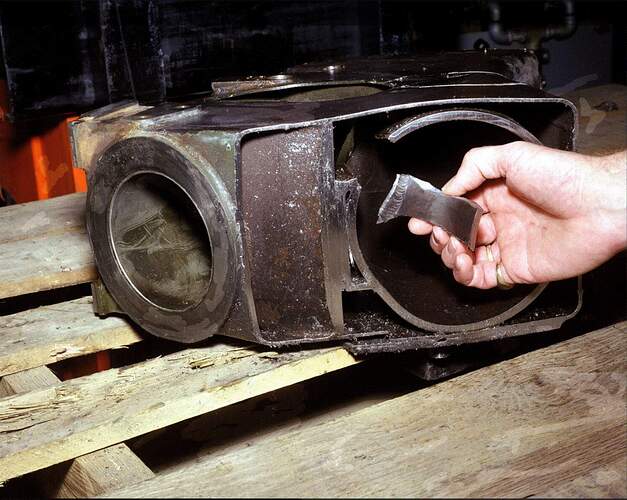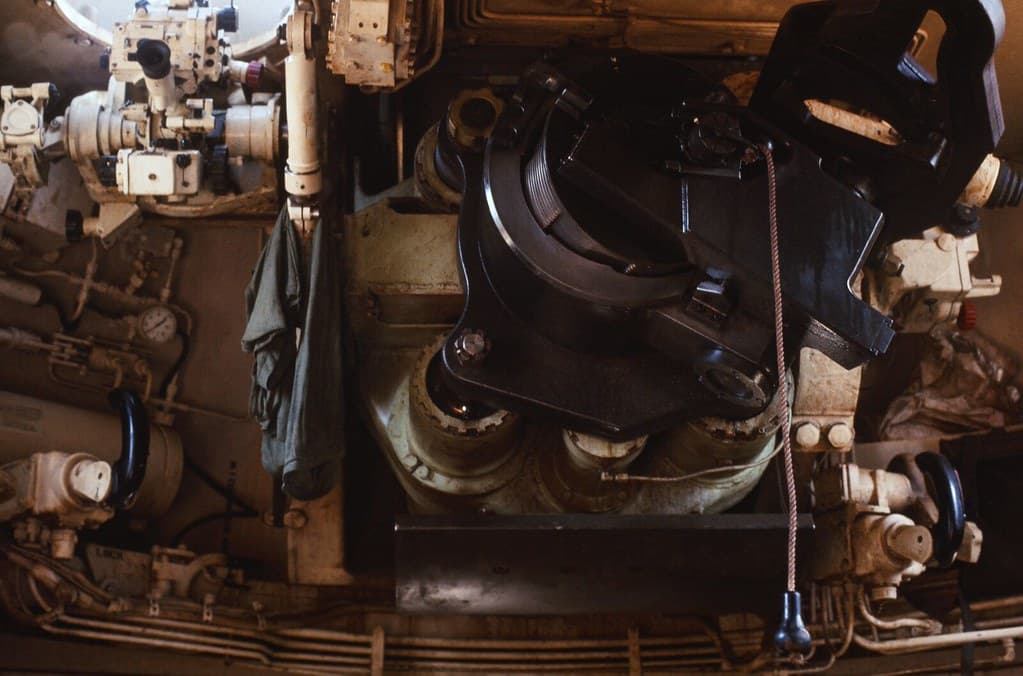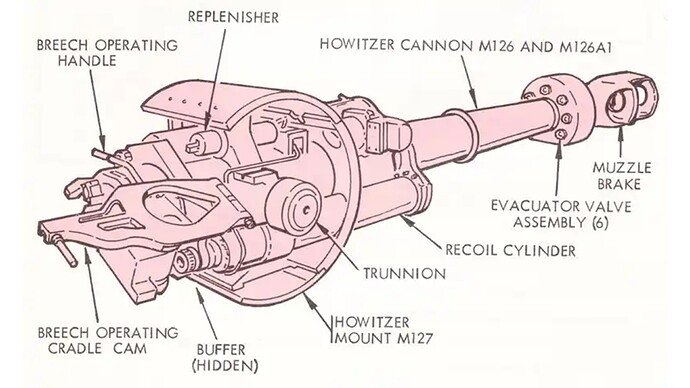I remember reading that the first, short barreled versions were actrually dangerous to their crews because the gun backblasted inside the turret. Can anyone provide more detail?
I trained on an extremely early M109 for awhile, and saw little danger except for fumes inside (the added an exhaust fan a little later). Only issue I saw was that it was a little cramped inside and handling that 98lb. round was a learning experience. But the third or fourth round you knew exactly where to be and how to handle it. The M107 was the dangerous one! (but I loved it anyway)
gary
They were no more dangerous than any other M108/M109 type howitzer.
You may seen reference to an attempt to extend the range of the original M109 with a new M119 powder charge, but that was found to over stress the recoil and suspension components and reportedly some discomfort to the crew. The solution to increase range was the new mount and longer barrel of the M109A1.
I 110% agree! Kinda cramped inside, but also away from the blast. Handling projos was not all that fun, but you also shot a lot less than a towed gun. I kinda imagine it got a little hot inside when it was 120 degrees (I only shot them in the states), also nice to be shooting in the dry instead of in the rain
gary
have no idea if the M109’s I shot were OK’d to shoot a charge eight. I have to think they were.
The real bitch I saw was performing general maintenance. The bore vac cleaning process was a bitch! In our environment; track pads were a weekly thing to change out. Cleaning the breech was also a task! Same basic system as the towed gun, but three times harder.
Most 109’s I was around in combat shot mostly green bag powder and low charge white bag. Where the towed guns shot mostly white bag #5 thru #7. That’s not to say a towed gun only shot white bag, as they shot green bag seven days a week. Probably the same for the M109. The real issue was barrel life and breech failure. The barrel had a factor number of 10,000, or 10,000 charge seven shots. They X-Rayed the barrel somewhere around the 5,000 number, and did it again at around 7,500 shots (actually closer to 8,500 shots as lower charges have a reduced factor number). In that 10,000 number you’d go thru three recoil systems assuming your shooting at a slow rate. If you shoot a lot of all nighters, you’ll probably double that amount. Breech was good for roughly 300 shots (no matter what powder) before it had to be cleaned. We cleaned every breech daily! At around the 325 shot mark, the breech was starting to get stiff to open and close. By 350 it was locked up. I might add here, that everybody took his turn at cleaning the breech. Even the Company XO helped at least once a month to just stay on top of the game. If you blew a recoil system at the 7,000 mark, you’d get a new barrel & breech as well. (about a four hour process on a towed gun, and probably all day on an M109.) You can change the barrel on an M110/M107 in about two and a half hours and not work too hard.
When you call a piece out due to a mechanical issue; everybody gets interested. You automatically move to the top of the food chain, and whatever you need you get right away. They’ll be on the radio every twenty minutes or so to see if it’s up yet. If they it take back to the rear, then they know what’s going on with it. As soon as it’s finished there with be a chopper waiting to take it home. When it arrives; there’ll be a FAC or F.O. in place to register it ASAP.
gary
Gino is correct. My first assignment was to a DS battalion in Germany and we had the original M109 short tube version for the first two years, and then in 1974 re-equipped with the long tube M109A1. There were never any issues or concerns with “gun backblast”. The turret was somewhat cramped (although the tankers in the crowd would certainly not see the problem!) but there was room enough for the Chief of Section, the Gunner, the Assistant Gunner, and the Number 1 Cannoneer to stand, as well as enough room to allow the Safety Officer to come in and check the lay of the gun prior to firing which was common practice in Germany during the early '70s. You did have to stay out of the way of the breech when it came out of battery during the recoil of firing, but as long as you stood to the side it was fine.
As Gary mentioned, when the breech block opened during recoil and return to battery, there was a certain amount of smoke and fumes that came into the turret, but it really wasn’t as much as went out through the muzzle brake, and certainly not enough to prevent any delay or hindrance in conducting any fire missions involving multiple rounds.
The only difference I ever noted was that the new tube did offer increased range over the short tube and we were issued an entirely new set of Firing Tables for it, both Tabular (the book), and Graphic (the sticks).
This did occur with the trunnions on the M109 and the introduction of the M119 powder charge, which was alleviated with the new cannon, as mentioned above.
I only shot M109’s for a week, and then for four days at another school. All we shot was green bag, and could watch the rounds hit right out front of us. We like most all M109’s in combat shot rounds brought in by hand from a truck or M548. That was a real pain due to the lack of room inside, but you soon learn to make do. Given a choice, I’ll take the good old M110 or even the M107 everytime.
Most people fail to remember that the actual gun is only part of your daily routine. There’s an engine and gear box as well as the tracks and suspension to take care of. M110/M107 generally shot from an existing azimuth, and firing in a forty degree arc (left to right). So you didn’t shred track pads like the others. Power packs were the same
That busted weldment might have been caused by a recoil system failure that went un-noticed for three or four rounds (AG and Chief should always watch the tube moving in full recoil on every shot). If it slams real hard and moves really fast; then we have a problem. A good crew will catch it on the first shot and call the piece out. Everybody inside (or between the trails) will know instantly! Looking at the photo, it looks like a bad weld to my eyes with no serious penetration.
gary
That’s an awfully dark picture @SableLiger what am I looking at? I can see the breech is partially open…
Can ya help a civilian out, here?
That’s the breech of the original M109 Howitzer. It’s an old picture, that’s why the lack of detail and proper lighting. I was hoping a former Artilleryman would recognize and point out the location where the trunnion for reference.
You can’t really see the trunions well in that pic. They are forward of the breech where the gun pivots within the turret. You can just see the bottom of the right side one where the two horizontal bolts are.
good photos. I have not looked at that stuff is many a year. The drawing is even better as it shows how the trunnion was made (a large steel casting that the barrel pivots on). That busted part looks like the guide for the recoil cylinders. They are a regenerative type, and I might add that I never knew they had a built in buffer (actually outside of the cylinders). There is another built into the cylinders, and you can see that in the photos you posted. If they fail, then so goes the recoil system
gary




